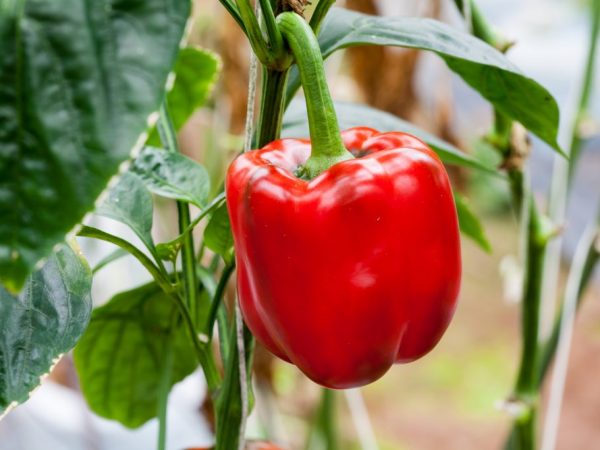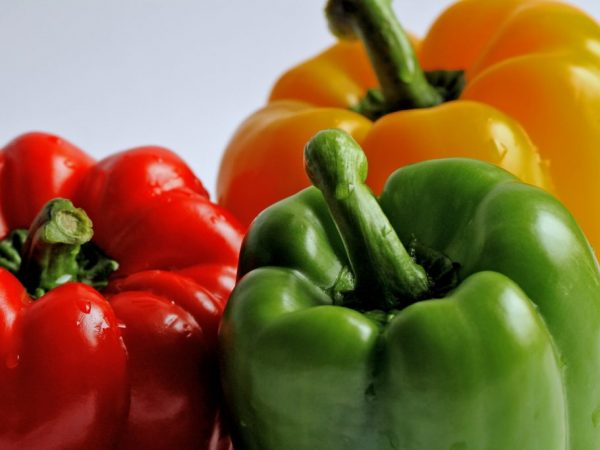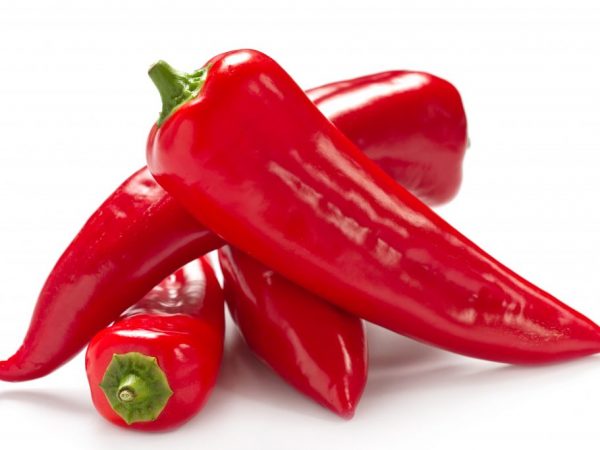The best varieties of pepper 2019
Pepper is an irreplaceable vegetable crop in the garden. There are many varieties, each grown for a different purpose. Some are suitable for conservation. Others prefer to use it fresh. In addition, every year the selection is replenished, providing a variety of both taste and aesthetic. That is why the question of choosing a variety is extremely acute for the gardener. We present to your attention the best varieties of pepper for 2019.
- What to consider when choosing
- Greenhouse varieties
- Orange
- Merchant
- Montero
- Orange miracle
- Amber
- Hercules
- Open ground varieties
- Lumina
- Ivanhoe
- Kapitoshka
- Czardas
- cabin boy
- The most productive varieties
- Claudio
- Barguzin
- Cornet
- Alyonushka
- Davos
- Health
- Varieties for different regions
- Disease Resistant Varieties
- Chord
- Belozerka
- Gladiator

The best varieties of pepper 2019
What to consider when choosing
Pepper is a capricious vegetable crop, which is quite demanding on all parameters of cultivation: heat, amount of sunlight, moisture, soil composition, applied fertilizers and treatment against diseases and parasites.
The choice of varieties for planting should take into account the following factors:
- the region where the plant is grown,
- its resistance to certain types of diseases and parasites;
- the type of soil that prevails on the site;
- the ability to regularly care for the plant.
- early maturity of the vegetable (early ripening, mid-ripening, late-ripening species are distinguished).
And also the agricultural technology of growing this crop is important. Below are the most popular varieties of bell peppers with different stages of fruit ripening. Some are intended for outdoor cultivation only, and some are suitable for greenhouse planting.
When buying seeds, you should be aware that hybrid plants are more resistant to pathogens, they are also less demanding on environmental conditions. As a result, this makes the growing process a little easier.
Greenhouse varieties
In regions with an unstable climate in the spring, it is better to grow this crop in a greenhouse.
If the climate is cold enough, then you will have to take either an early-ripening or a mid-ripening variety for cultivation, because late-ripening varieties can fall into their vegetative period during the first autumn frosts.
According to 2019 data, the following varieties are best suited for the Ural and Siberian regions.
Orange
Early variety. The fruits are small (about 50 g), have a red or bright orange color, are quite fleshy and sweet. The smell is strong.
Merchant
The fruit of this variety is medium in size but tastes quite good. The height of the bush is within 70 cm.
From the moment when the first shoots appear, it takes about 4 months to complete the harvest. Ripening is massive, a lot can be harvested, with careful care of the bushes.
Montero
Red pepper, the bush is tall. And the mass of the fruit itself is truly gigantic - it can reach up to 900 g and at the same time has a thick, juicy wall.
Orange miracle
Ripening of such a fruit will require no more than 100 days.If the orange miracle variety is planned to be grown in the middle lane, or in regions with a more severe climate, then it should be planted in a greenhouse, but in a warm climate it is suitable for growing in open ground.
On average, the mass of one pepper is 300 - 400 g.
Amber
Differs in fruits of a bright orange color, they are conical in shape, with a slight manifestation of faceting.
Peppers have excellent transportability, and they also have high taste and a fairly thick-walled pulp. Tall bush.
Hercules
A variety of high keeping quality, although the fruits themselves are not large enough, the weight, on average, is up to 200 g. The bushes are fruitful - the harvest is about 4 kg.
Open ground varieties

In unstable climates, it is better to plant early varieties.
If the climate permits, then both early and late peppers can be grown in the open field. In this case, there is no threat of early autumn or late spring frosts.
But not in the most favorable climate for planting in the garden, you need to choose early varieties.
They usually yield after 80 days, but no later than 100 days after the first shoots. If there is a need to plant such a variety, it is better to choose from the ones presented below.
Lumina
The most easily recognizable variety due to the fact that it is he who appears on the shelves in the spring as the very first among all varieties of pepper.
It is a small size light yellow-green cones with a small wall thickness. Ideal for canning and stuffing, because the fruit reaches a mass of only about 100 g.
Taste qualities are rather modest. You can save the harvest for 3 months.
Ivanhoe
The pepper is formed at a compact height, about 60-80 cm. During the fruiting period, ripening is simultaneous and massive. Fruit weight is about 120-150 g.
Taste characteristics are excellent. This variety has excellent transportability and keeping quality. In technical ripeness, the variety has a silvery-white or light yellow color, then it turns red in biological maturity.
But it is worth noting that cultivation will require a bush garter. But the plant is cold-resistant and not susceptible to most types of diseases.
Kapitoshka
Those who want to get an earlier harvest should plant this variety.
Kapitoshka has one distinctive feature, its ramification and root system make it possible to plant bushes close to each other.
One pepper can reach 250 g, but the average weight still fluctuates around 180-200 g.
The plant shows resistance to rot. Also, it is not often susceptible to other diseases, which greatly facilitates the growing process. The crop can be harvested within 3 months after the massive pecking of the entrances.
Czardas
The variety will delight its owners with its high taste even before the fruits reach biological maturity. This is due to the fact that while unripe they taste good.
This variety cannot be classified as fleshy, its thickness reaches only 6 mm. The bush is stunted.
cabin boy
Forms a small bush with an underdeveloped root system. This allows a dense planting, without damage to neighboring plants and without suppressing one bush with another.
Harvesting is quite amicable. During technical ripeness, the varieties have a reddish-brownish color, then changing to brighter ones, with further maturation.
It should be noted that the wall thickness does not exceed 8 mm under favorable conditions. The pepper itself has a pronounced taste and juiciness.
The most productive varieties

Good care will allow you to get a rich harvest
If you want to get the highest yield possible, the following varieties of bell peppers should be planted in 2019.
Claudio
It differs in that its beautiful smooth and conical fruits lie for a long time after they are harvested from the garden.
The taste of pepper makes it a welcome guest on the table fresh, and is also great for preservation.Variety c protects its structure when frozen fresh.
Barguzin
The thick-walled and wide pepper Barguzin is a real yellow handsome man. He will delight his owner with a high yield.
Depending on the growing conditions per m2, you can get from 10 to 13 kg of fragrant juicy fruits.
Cornet
It has a distinctive feature due to its brownish color. On average, the fruits weigh from 200 to 250 g. A square meter of planting gives up to 10 - 12 kg of vegetables per season.
Alyonushka
Although the bush of this plant grows up to 1 m, it will still cause a lot of trouble to its owner, because requires a garter.
Harvested at the stage of technical maturity to ensure longer storage. During this period, the pepper reaches a green color, saturated in its intensity. Later it ripens to a red color.
One bush will bring about 2 kg.
Davos
The variety differs in that it is quite early: the first fruits after germination appear in less than 3 months. It also has a specific cubic shape and rather thick walls with juicy aromatic pulp.
Health
The peppercorns are small, their weight is only about 50 g. But the bush can reach almost 2 m in height and can collect up to 10-12 kg per season with proper plant care.
Varieties for different regions
Mid-season bell peppers are the most popular in 2019. The following selection novelties are suitable for growing in the Moscow region and central Russia.
- Bogatyr. A bright orange pepper with a slightly pointed shape. 6-8 kg of fruit can be harvested from m². The variety is considered fruitful.
- Big Daddy will delight collectors. The variety can be attributed to both mid-ripening and early-ripening: depending on the care and climate, harvesting can be done as early as 90 or 110-115 days after the emergence of new shoots. The fruit has a specific color, it can range from dark purple to pale purple, depending on the stage of maturity.
- Marshmallow. This pepper variety is distinguished by its unusual shape. It is flattened, forming a specific sphere with dented poles. The color is bright green, the thickness of the pulp is quite large - 6-8 mm. It also possesses high taste, allowing it to be used fresh and canned. The variety practically does not become infected with verticillium and is resistant to many other types of diseases. Harvesting takes place in 110-120 days from the beginning of the first shoots.
- Triton. Will delight you with a bountiful harvest even in cold regions. It is not picky about sunny weather, it will tolerate an increased amount of moisture well. The variety is early, and its fruits are thick-walled and juicy.
Disease Resistant Varieties
Chord
A shrub 1 m high requires a garter. It gives about 5-6 kg of harvest per season. Will delight you with juicy yellow fruits after 80 days.
Peppers at the time of technical ripeness are already suitable for use. Further, they become bright red, and their walls are thicker (up to 8 mm), while they taste juicy and aromatic with a pronounced taste and special sweetness.
The crop can be stored for about 2 months. The fruits show a pronounced resistance to rot and late blight.
Belozerka
Doesn't require much hassle to grow. This is due to the fact that the plant is resistant to most diseases inherent in the culture.
Ripening time: after 4 months, the fruits are ready for mass harvest, because the return of the peppers is simultaneous.
Gladiator
The variety will show all its taste as well as possible. And also he is capable of rapid growth without unnecessary risks of getting sick both in the open field and under a film cover.
The shape of the peppers is conical. The plant is resistant to verticillium disease.

